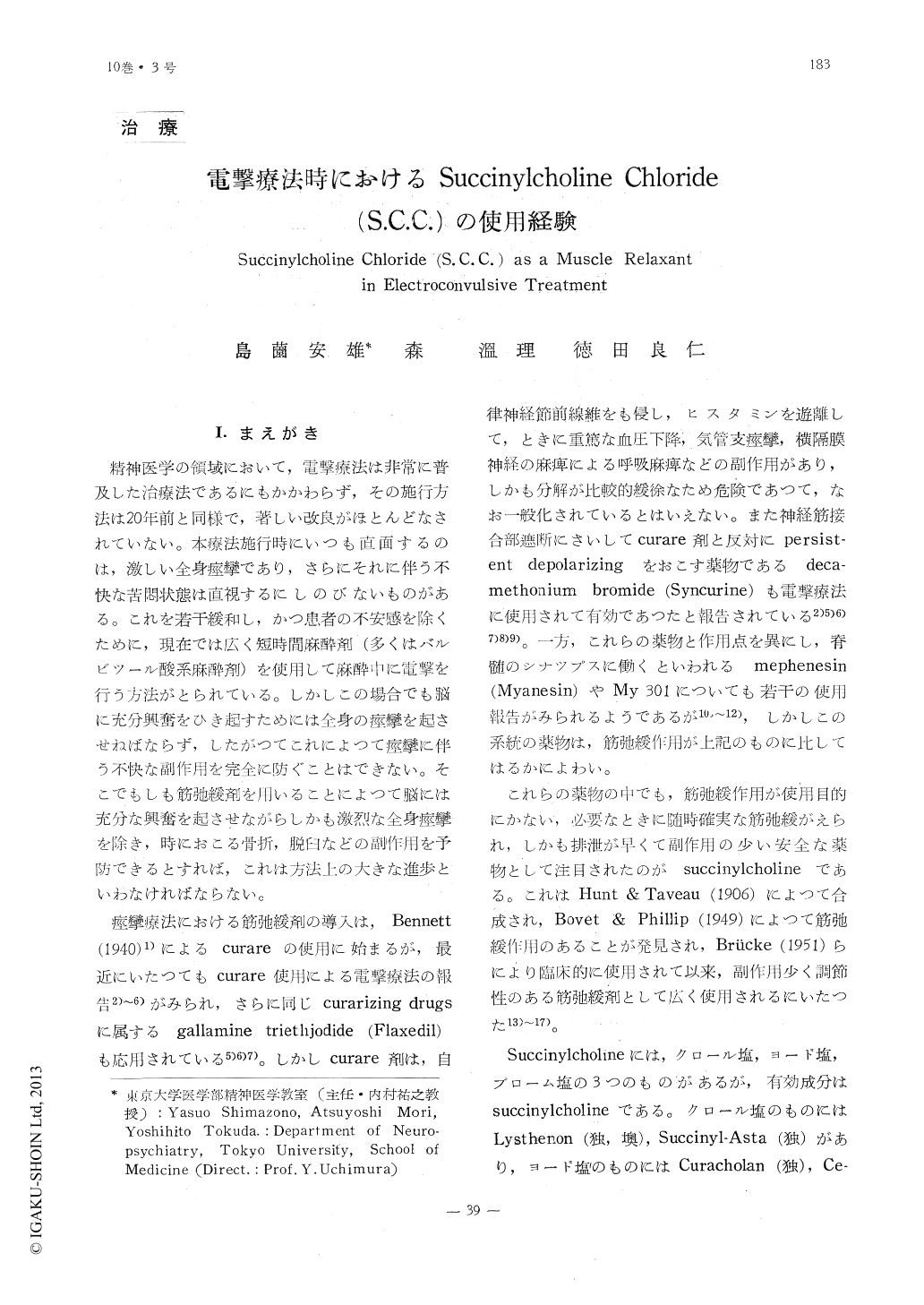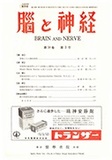Japanese
English
- 有料閲覧
- Abstract 文献概要
- 1ページ目 Look Inside
I.まえがき
精神医学の領域において,電撃療法は非常に普及した治療法であるにもかかわらず,その施行方法は20年前と同様で,著しい改良がほとんどなされていない。本療法施行時にいつも直面するのは,激しい全身痙攣であり,さらにそれに伴う不快な苦悶状態は直視するにしのびないものがある。これを若干緩和し,かつ患者の不安感を除くために,現在では広く短時間麻酔剤(多くはバルビツール酸系麻酔剤)を使用して麻酔中に電撃を行う方法がとられている。しかしこの場合でも脳に充分興奮をひき起すためには全身の痙攣を起させねばならず,したがつてこれによつて痙攣に伴う不快な副作用を完全に防ぐことはできない。そこでもしも筋弛緩剤を用いることによつて脳には充分な興奮を起させながらしかも激烈な全身痙攣を除き,時におこる骨折,脱臼などの副的作用を予防できるとすれば,これは方法上の大きな進歩といわなければならない。
痙攣療法における筋弛緩剤の導入は,Bennett(1940)1)によるcurareの使用に始まるが,最近にいたつてもcurare使用による電撃療法の報告2)〜6)がみられ,さらに同じcurarizing drugsに属するgallamine triethjodide (Flaxedil)も応用されている5)6)7)。
Succinylcholine chloride (S.C.C. as a muscle relaxant was used in 28 cases with mental disorders for the purpose of inhibit-ing intense muscular convulsion induced by electroshock treatment and of preventing disagreable complications such as fracture.
The optimum dosis of S.C.C.to inhibit generalized convulsion was between 0.3 to 0.6 mg/kg intravenously.
It was favorable to electroshock at 1 1/2 minutes after the injection of S.C.C., because it took one minute to produce the maximum muscular relaxation, and the effect of the drug usually did not persist longer than threeminutes.
A typically inhibited convulsion appeared only in forms of twitches of the facial mus-cles and tonic spasms in the peripheral parts of the extremities. However. as to the duration of clinical convulsion, it was not so much shortened by the use of S.C.C..
It was also interesting that, even in the tonic stage, EEG showed no rapid spike discharges and demonstrated relatively slow large activities.

Copyright © 1958, Igaku-Shoin Ltd. All rights reserved.


